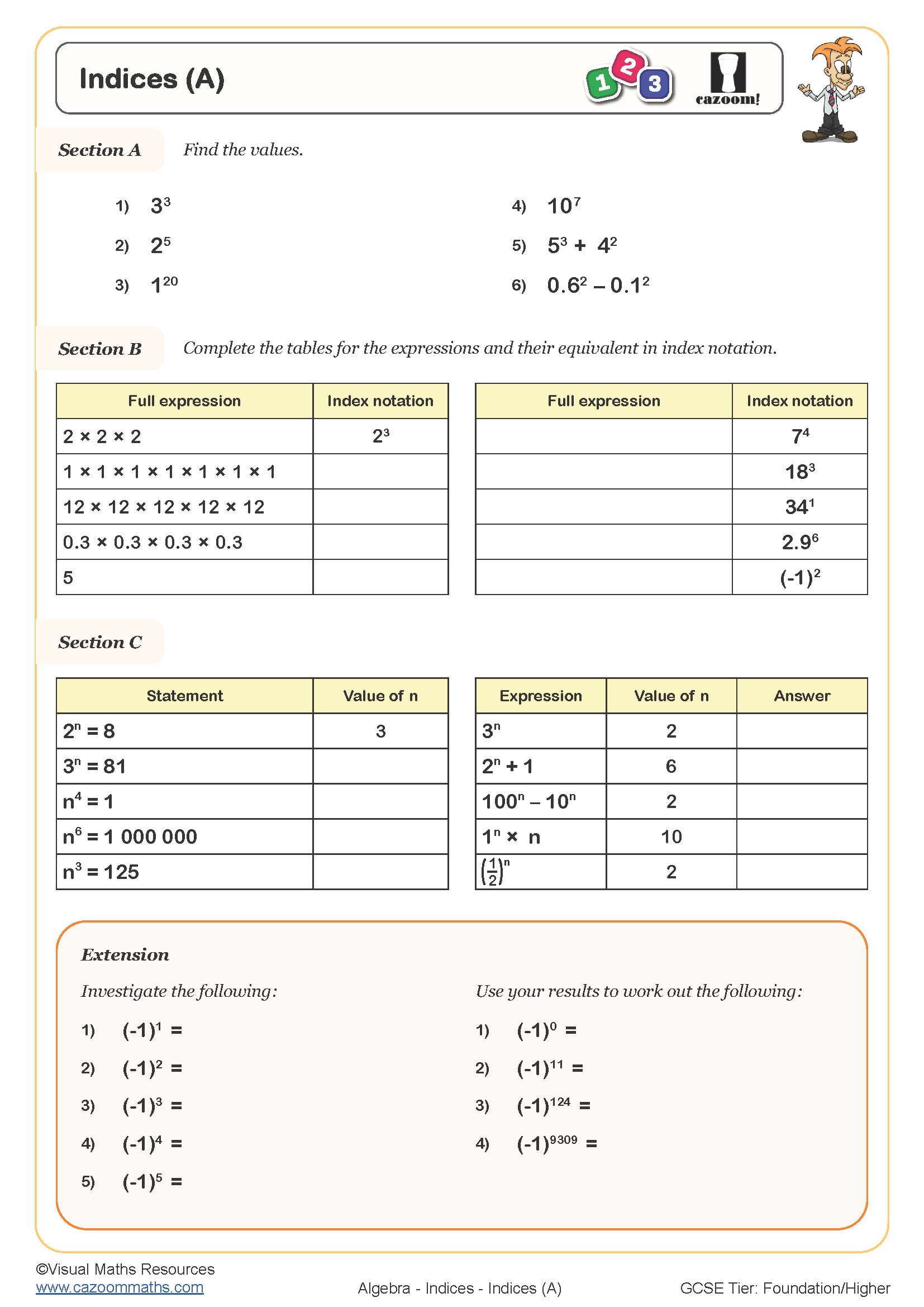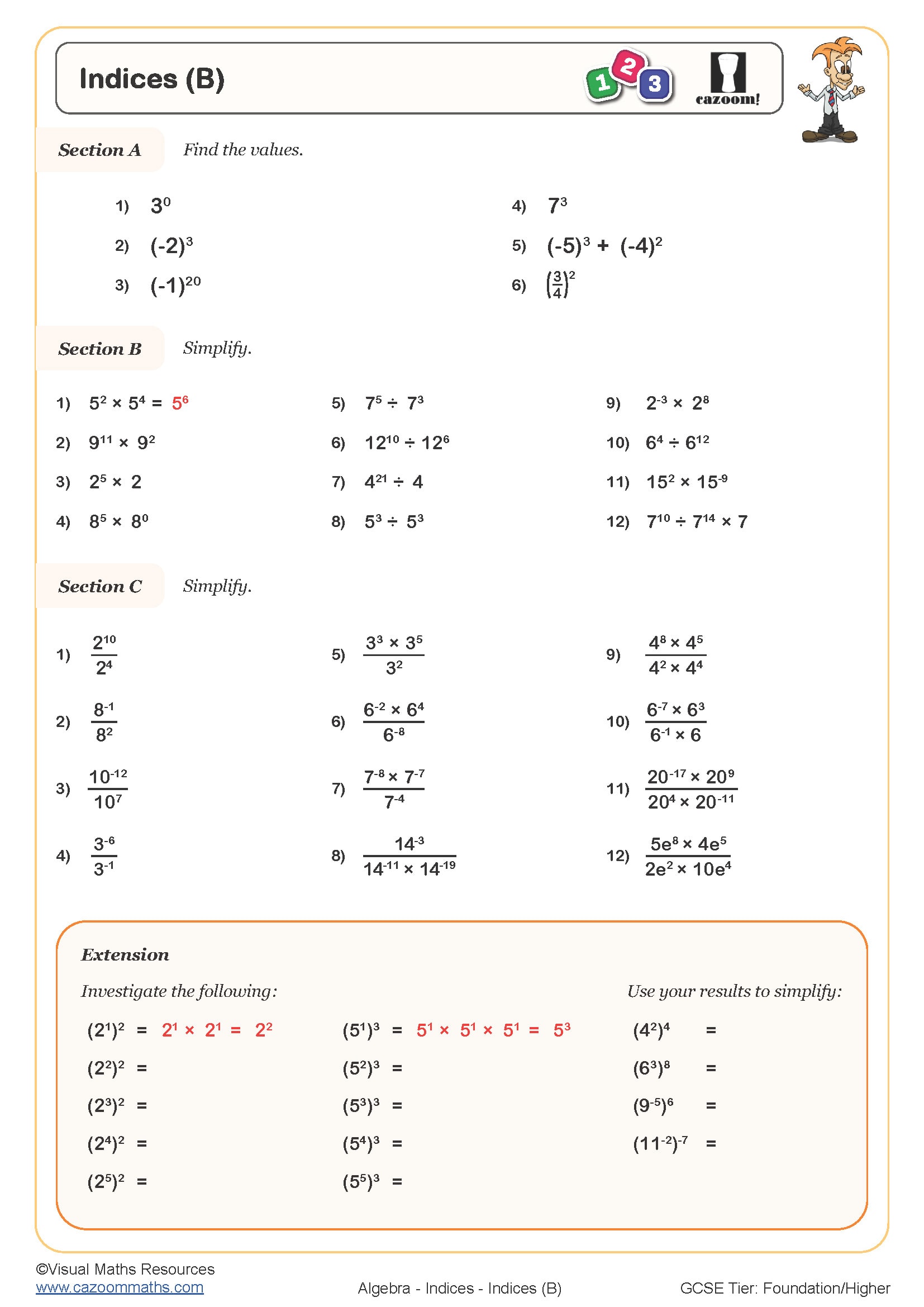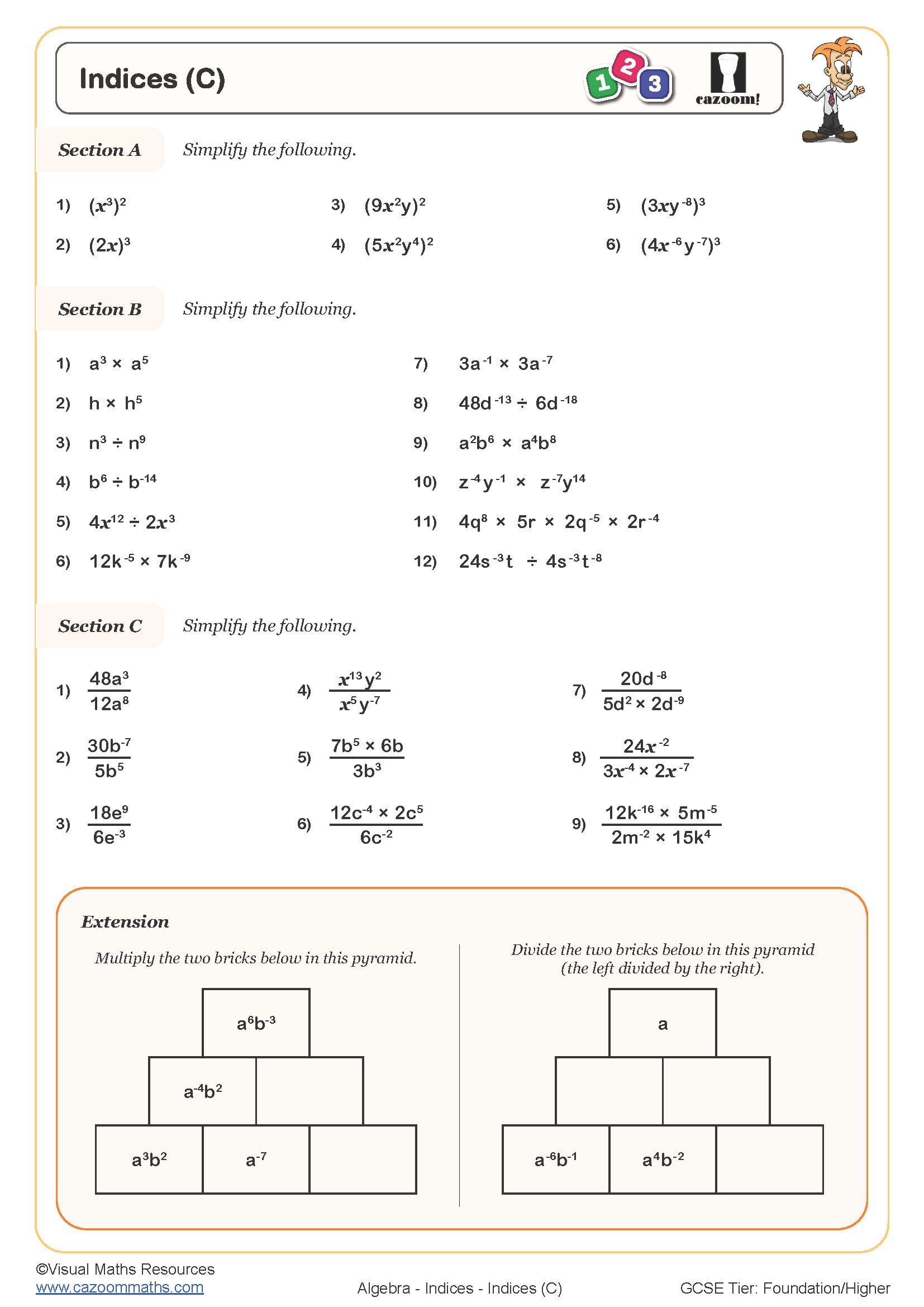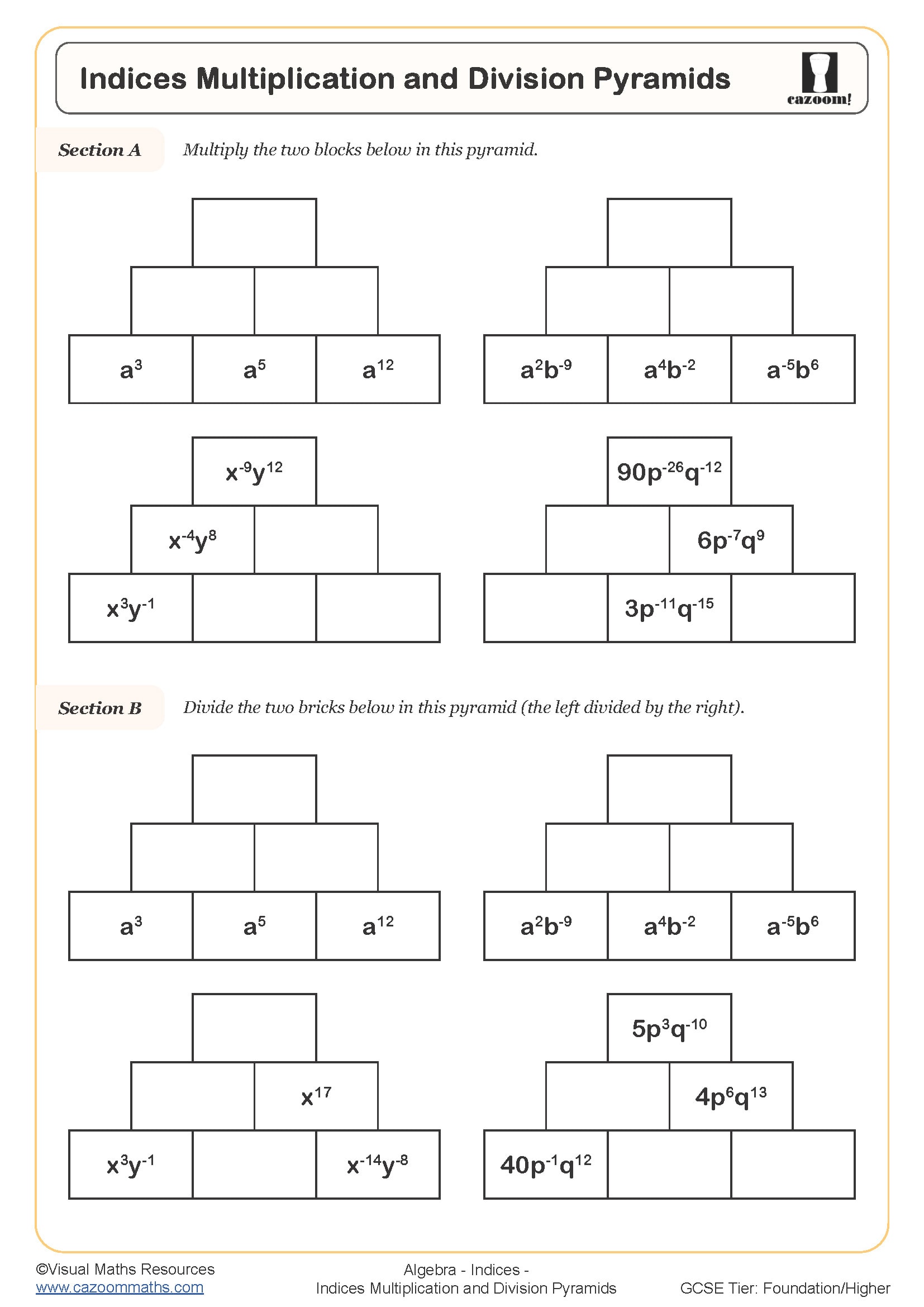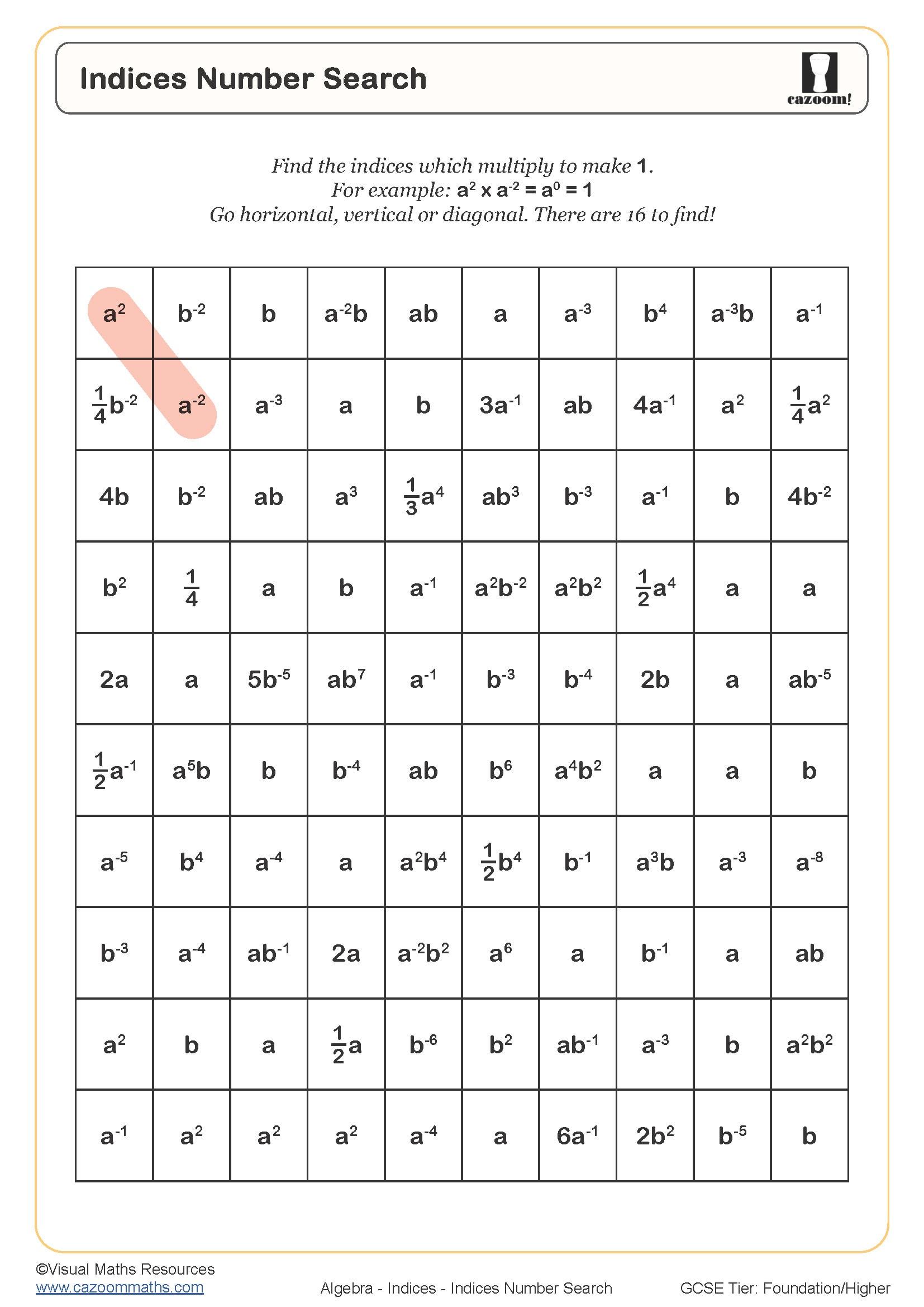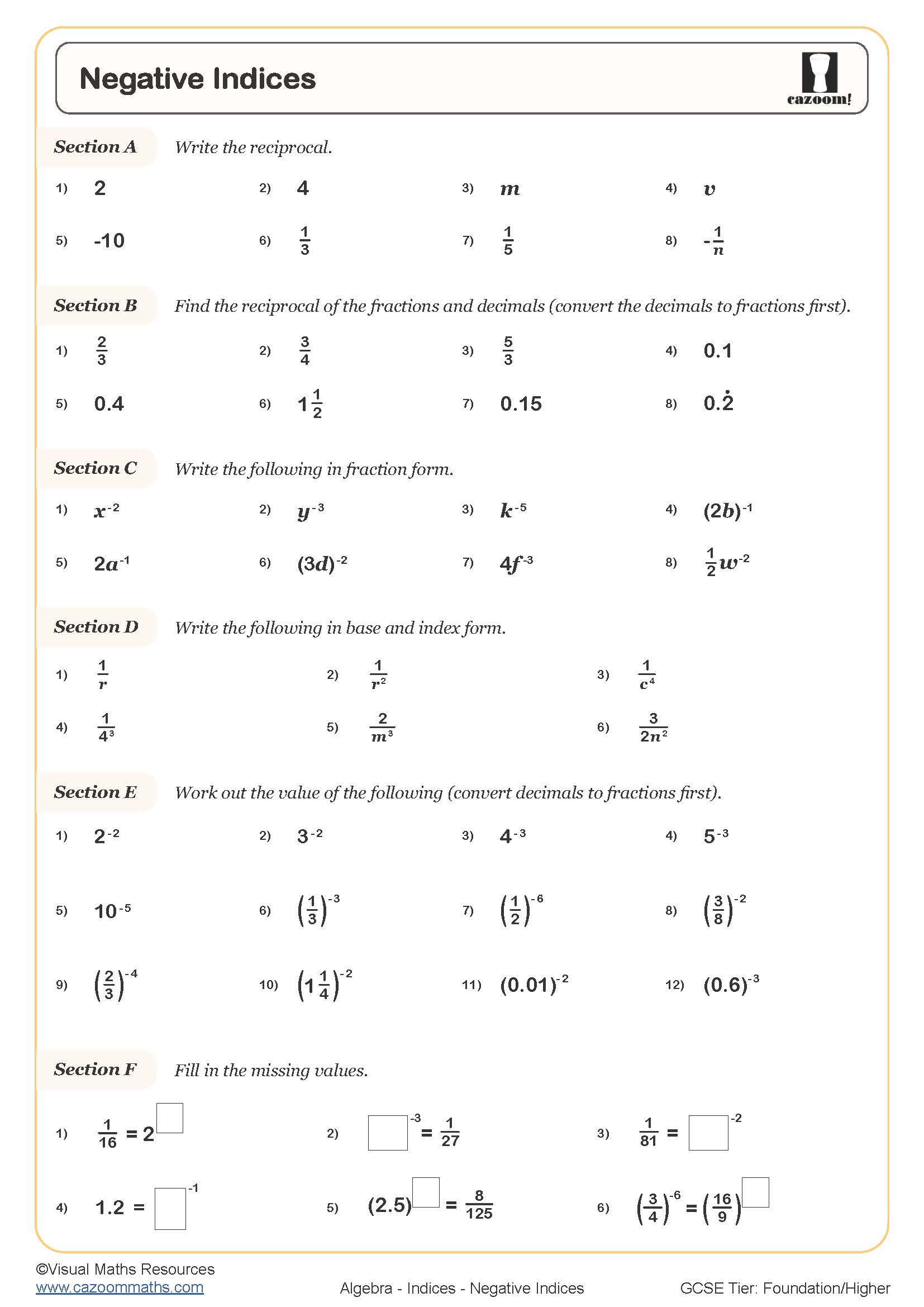Year 9 Indices Worksheets
How These Printable Year 9 Indices Worksheets Make Maths Less Stressful
Indices are one of the cornerstones of algebra, and Year 9 worksheets give pupils a consistent routine for applying the laws of powers. The examples demonstrate rule relationships between them, while the various exercises help students develop adaptable problem-solving skills. The focus on pattern recognition, together with methodical step-by-step execution, helps students build secure process understanding, which will help them understand abstract algebra better in their future studies.
Specific learning benefits include:
• The exercise helps students develop their ability to use index notation correctly.
• Builds confidence with negative powers
• The concept applies to fractional exponents.
• The program helps students develop their skills in algebra and number work which is essential for GCSE success.
• The activity provides multiple practice opportunities for students to complete their homework assignments or review material.
• The process needs a structured method to solve problems.
Topic Map: What Students Practise Step by Step With KS3 Algebra Resources
The collection introduces indices through accessible entry points before progressing to more challenging expressions. The learning progression begins with repeated multiplication before students learn formal index laws, which allow them to solve more complex algebraic expressions. The tasks include fractional and negative powers, which demand precise thinking during every step of the process. Fully worked solutions show the structure of correct methods, giving pupils the chance to compare approaches. Students achieve better algebra skills and become more self-sufficient through this method.
The worksheets in this collection include:
• Laws of Indices — introduces and practices the key rules of powers
• Negative Indices — explores reciprocal relationships in clear, manageable steps
• Fractional Indices — develops confidence with roots written as powers
• Simplifying Indices — reinforces consistent use of index laws across problems
• Mixed Indices — challenges pupils to combine multiple power rules fluently
• Indices Problem Solving — applies knowledge to multi-step contextual problems
Worksheets vs. Whiteboard Lessons: Why Year 9 Indice Activities Stand Out
Teachers often look for resources that can be used across a wide range of classroom situations, and these worksheets are designed with that versatility in mind. The program begins with fundamental concepts that lead to new material, enabling students to develop their confidence before tackling advanced algebraic subjects. Students can complete their work efficiently due to the well-organised structure and multiple example types, while the varied exercises keep them engaged. The complete worked solutions included in the materials allow teachers to demonstrate concepts to students, while students can use them for self-assessment, which makes the materials both practical and reliable.
From Economics to Science: Indices in Daily Maths
The study of indices equips pupils with mathematical tools that extend far beyond the classroom. Understanding powers and roots supports logical thinking and problem-solving in many different contexts:
• Science applications – exponents are used when balancing chemical equations, modelling populations, and analysing radioactive decay.
• Physics formulas – calculations involving speed, energy, or wave behaviour often rely on powers and roots.
• Technology and computing – exponential growth explains increases in processing power, data storage, and digital connectivity.
• Finance and economics – indices underpin compound interest, depreciation, and long-term investment growth.
• Everyday reasoning – recognising exponential change helps students make sense of rapid societal trends.
By developing fluency with indices, students gain versatile skills that transfer across subjects and into real-life decision-making.
